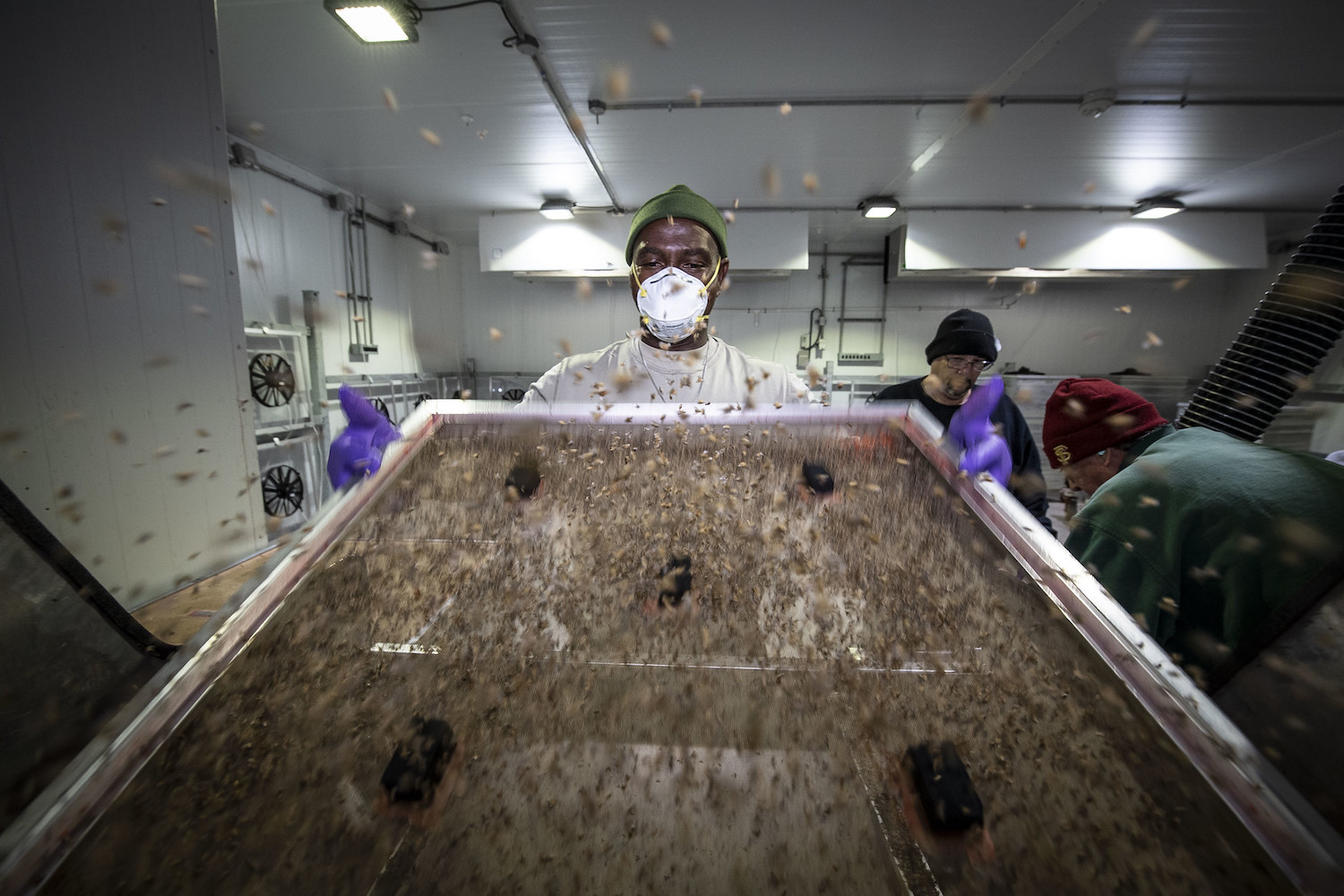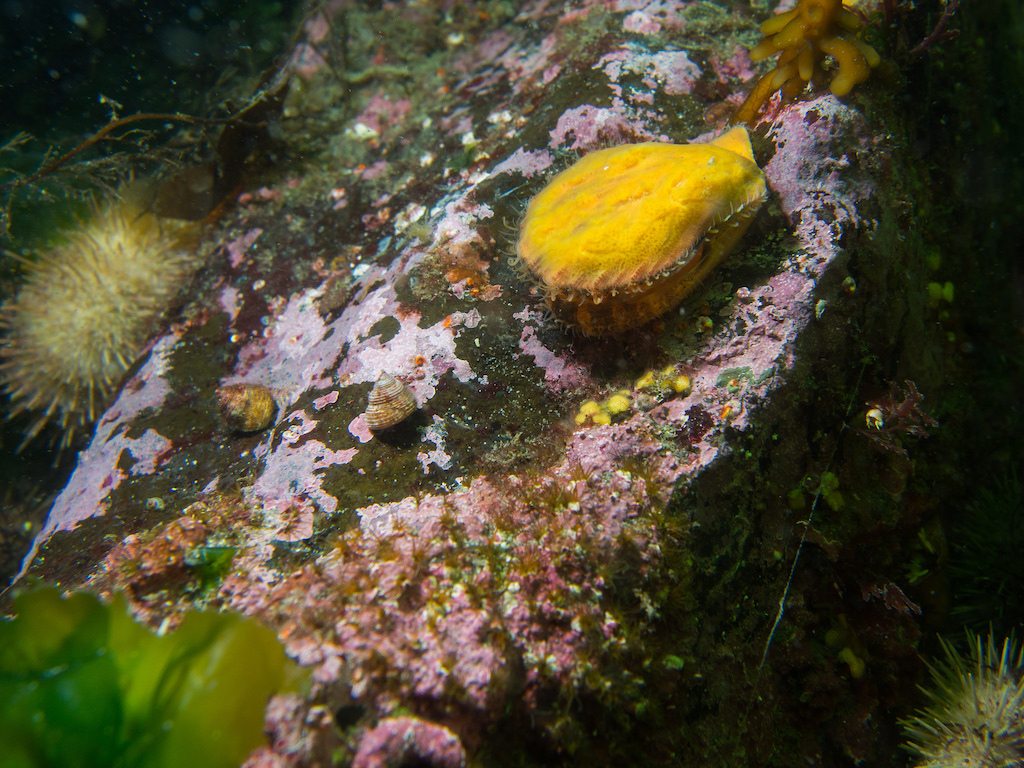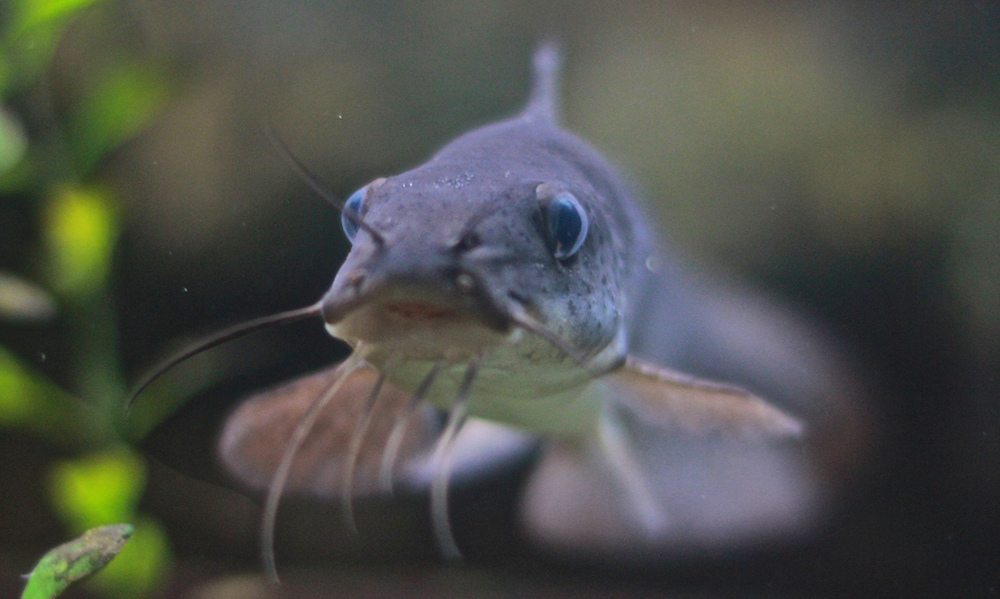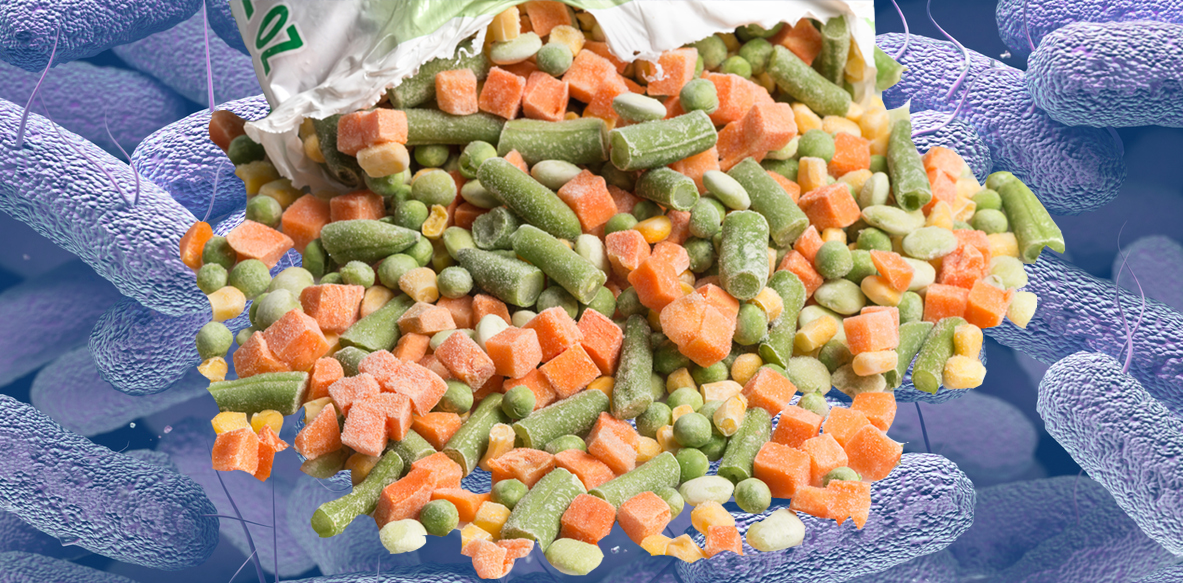A small airplane soaring 2,000 feet above the ground on Monday released a steady stream of Mediterranean fruit flies, all of them male, into the air above Florida’s affluent Palm Beach County. The population would be considered invasive in the wild, but officials prefer to call them “sterile” because these particular flies can no longer do the damage an invasive species can. The mission of those flies? Mate with the local females.
Earlier in the day, the flies were loaded onto a plane in Sarasota, a stopover on the opposite side of the state. They made up one batch of approximately 100 million fruit flies that were en route to Palm Beach County from Guatemala. That shipment of 100 million was just one of countless weekly deliveries that have made the same journey as part of a large-scale fruit fly prevention program launched in 1998.
The brief layover in Sarasota gave staffers at the United States Department of Agriculture’s (USDA) Animal and Plant Health Inspection Service (APHIS) a chance to rear the male flies, which were previously sterilized with radiation in Guatemala, which meant that any Palm Beach female that mated with a sterilized Palm Beach male would be unable to produce offspring from the encounter. The females could still reproduce with wild males, of course, but by flooding various regions in the state with sterile males, APHIS could reduce the likelihood that they actually would. An invasive female fruit fly is capable of laying up to 800 eggs within in its month-long lifespan. This sterile release program (call it fruit fly birth control) greatly reduces that reproductive capacity.
Left to its own devices, the Mediterranean fruit fly—known as the Ceratitis capitata, scientifically, or the Medfly, for short—can wreak havoc on Florida’s fruit farms. The pest originated in sub-Saharan Africa, but can now be found in many tropical and subtropical regions around the world, including in the United States in Florida and California.
Female fruit flies typically breach thin-skinned fruits and vegetables like tomatoes, peaches, cherries, and eggplant, entering through surface nicks and cuts to lay their eggs. Fruit flies are also fond of citrus fruit, even though the skins aren’t necessarily thin.
When the larvae hatch, they feed on what’s inside. When produce is infested, it becomes inedible. And because the Medfly can reproduce rapidly, infestations can quickly render large parts of a harvest inedible. In other words, the species, left to its own devices, can devastate crops. In a state like Florida, where farmers produce over a billion dollars worth of produce each year, a Medfly outbreak can severely impact the food available on grocery store shelves around the country. The Medfly is not the same fruit fly you are likely to encounter in your home kitchen when you leave ripe fruit on the counter for too long. That’s is a species called Drosophila melanogaster. The Medfly does damage at a much larger scale.
Preventing a fly feast is the point of APHIS’s two-decade-old sterile Mediterranean fruit fly release program, which distributes 4 billion sterilized fruit flies into high-risk areas in Florida each year, according to USDA public affairs specialist Abbey Powell. Palm Beach County is one of those areas, as are Hillsborough, Miami-Dade, and Broward Counties. According to APHIS, no Mediterranean fruit fly outbreak has been documented in Florida since the program’s launch. APHIS also runs sterile fruit fly release programs in Texas and California.
Mediterranean fruit flies before their release
The Medfly can destroy some of Florida’s most valuable agricultural products, and that’s a fear that looms large in the minds of tropical fruit farmers like Alexander Salazar, who grows mangoes and avocados in West Palm Beach. Salazar’s eight-acre farm hosts nearly 300 varieties of mangoes. Florida produces the most mangoes of any state in the U.S., and peak mango season begins in July.
“I got it … into my head that someday, [a fruit fly infestation] can happen and I could get shut down,” Salazar said in a phone interview. “I need to be prepared almost like I have to be prepared if there’s a hurricane or severe storm.”
A quarantine is triggered when two female fruit flies are found within a 3-mile radius of one another. That may sound like an infinitesimal find, but Medfly populations can grow exponentially,
“If that happens, you cannot sell your fruit other than if it’s consumed on site, but it cannot leave your property,” Salazar said. “And there’s no recourse. I mean that you don’t get a check from USDA when they shut you down, which is kind of terrible actually, because your fruit can be perfectly fine, but you can’t sell it or ship it. For those of us who are in this business, that’s our livelihood.”
The good news is that no fruit flies have been detected in Florida yet this year.
There’s also an interesting wrinkle in the popular narrative about the fruit fly’s roots in America. According to The Washington Post, almost a century ago, when the fruit fly first became an issue for growers stateside, farmers suspected the state’s plant board—now a division of the Florida Department of Agriculture—of maliciously burying Mediterranean fruit fly larvae in fields. In doing so, farmers claimed, plant board employees created a problem that only they could eradicate, thereby preserving their jobs in perpetuity. There’s little evidence behind the conspiracy theory, though one former staffer did claim, according to the Post report, that he was ordered to put fruit fly eggs in the soil whenever there wasn’t enough work for the plant board.
Today, the only fruit flies planted by agricultural officials are the ones ejected from planes by the millions.
Correction: An earlier version of this article misstated that the fruit flies are sterilized in Sarasota. They are sterilized in Guatemala, and then reared in Sarasota.












